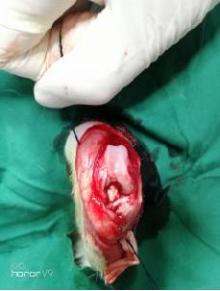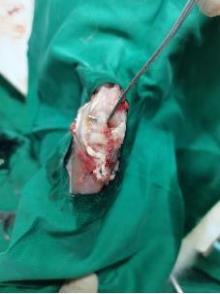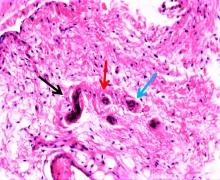| 1 |
CURADO J, HULET C, HARDY P, et al. Very long-term osteoarthritis rate after anterior cruciate ligament reconstruction: 182 cases with 22-year’ follow-up[J]. Orthop Traumatol Surg Res, 2020, 106(3): 459-463.
|
| 2 |
ØIESTAD B, ENGEBRETSEN L, STORHEIM K, et al. Winner of the 2008 systematic review competition: knee osteoarthritis after anterior cruciate ligament injury[J]. Am J Phys Med, 2009, 37: 1434-1443.
|
| 3 |
ZHANG L, QI J, ZENG Y, et al. Proprioceptive changes in bilateral knee joints following unilateral anterior cruciate ligament injury in cynomolgus monkeys[J]. Med Sci Monit, 2018, 24: 105-113.
|
| 4 |
刘晓磊, 张鸿悦, 章耀华, 等. 前交叉韧带重建术后患者膝本体感觉与姿势控制的相关性[J]. 中国康复, 2021, 36(3): 170-173.
|
| 5 |
ORDAHAN B, KÜÇÜKŞEN S, TUNCAY İ, et al. The effect of proprioception exercises on functional status in patients with anterior cruciate ligament reconstruction[J]. J Back Musculoskelet Rehabil, 2015, 28(3): 531-537.
|
| 6 |
KAKAVAS G, MALLIAROPOULOS N, BIKOS G, et al. Periodization in anterior cruciate ligament rehabilitation: a novel framework[J]. Med Princ Pract, 2021, 30(2): 101-108.
|
| 7 |
张晓宇, 张君涛, 王 平, 等. 早期康复训练对膝关节前交叉韧带重建术后疗效的Meta分析[J]. 中国中西医结合外科杂志, 2022, 28(6): 824-829.
|
| 8 |
陈 鹏, 王 玲, 董诗雨, 等. 全身振动训练对前交叉韧带重建后影响的Meta分析[J]. 中国组织工程研究, 2023, 27(36): 5875-5883.
|
| 9 |
李 彬. 膝关节ACL损伤及重建后本体感觉的实验研究[D]. 上海: 第二军医大学, 2009.
|
| 10 |
FREEMAN M A, WYKE B. Articular contributions to limb muscle reflexes. The effects of partial neurectomy of the knee-joint on postural reflexes[J]. Br J Surg, 1966, 53(1): 61-68.
|
| 11 |
BARTELS T, BREHME K, PYSCHIK M, et al. Postural stability and regulation before and after anterior cruciate ligament reconstruction-A two years longitudinal study[J]. Phys Ther Sport, 2019, 38: 49-58.
|
| 12 |
LEE D H, LEE J H, JEONG H J, et al. Lack of correlation between dynamic balance and hamstring-to-quadriceps ratio in patients with chronic anterior cruciate ligament tears[J]. Knee Surg Relat Res, 2015, 27(2): 101-107.
|
| 13 |
KOSY J D, MANDALIA V I. Anterior cruciate ligament mechanoreceptors and their potential importance in remnant-preserving reconstruction: a review of basic science and clinical findings[J]. J Knee Surg, 2018, 31(8): 736-746.
|
| 14 |
ARUMUGAM A, STRONG A, TENGMAN E,et al. Psychometric properties of knee proprioception tests targeting healthy individuals and those with anterior cruciate ligament injury managed with or without reconstruction: a systematic review protocol[J]. BMJ Open, 2019, 9(4): e027241.
|
| 15 |
SCHUHFRIED O, MITTERMAIER C, JOVANOVIC T, et al. Effects of whole-body vibration in patients with multiple sclerosis: a pilot study[J]. Clin Rehabil, 2005, 19(8): 834-842.
|
| 16 |
ZANDIYEH P, KÜPPER J C, MOHTADI N G H,et al.Effect of stochastic resonance on proprioception and kinesthesia in anterior cruciate ligament reconstructed patients[J]. J Biomech, 2019, 84: 52-57.
|
| 17 |
COSTANTINO C, BERTULETTI S, ROMITI D. Efficacy of whole-body vibration board training on strength in athletes after anterior cruciate ligament reconstruction: a randomized controlled study[J]. Clin J Sport Med, 2018, 28(4): 339-349.
|
| 18 |
HAN G Y, PARK S A, KIM J H, et al. Effects of vibration on the proteome expression of anterior cruciate ligament cells[J].Exp Biol Med,2011,236(7): 783-789.
|
| 19 |
ZHANG L, ZENG Y, QI J, et al. Mechanism of activating the proprioceptive NT-3/TrkC signalling pathway by reverse intervention for the anterior cruciate ligament-hamstring reflex arc with electroacupuncture[J]. Biomed Res Int, 2018, 2018: 6348764.
|
 )
)











